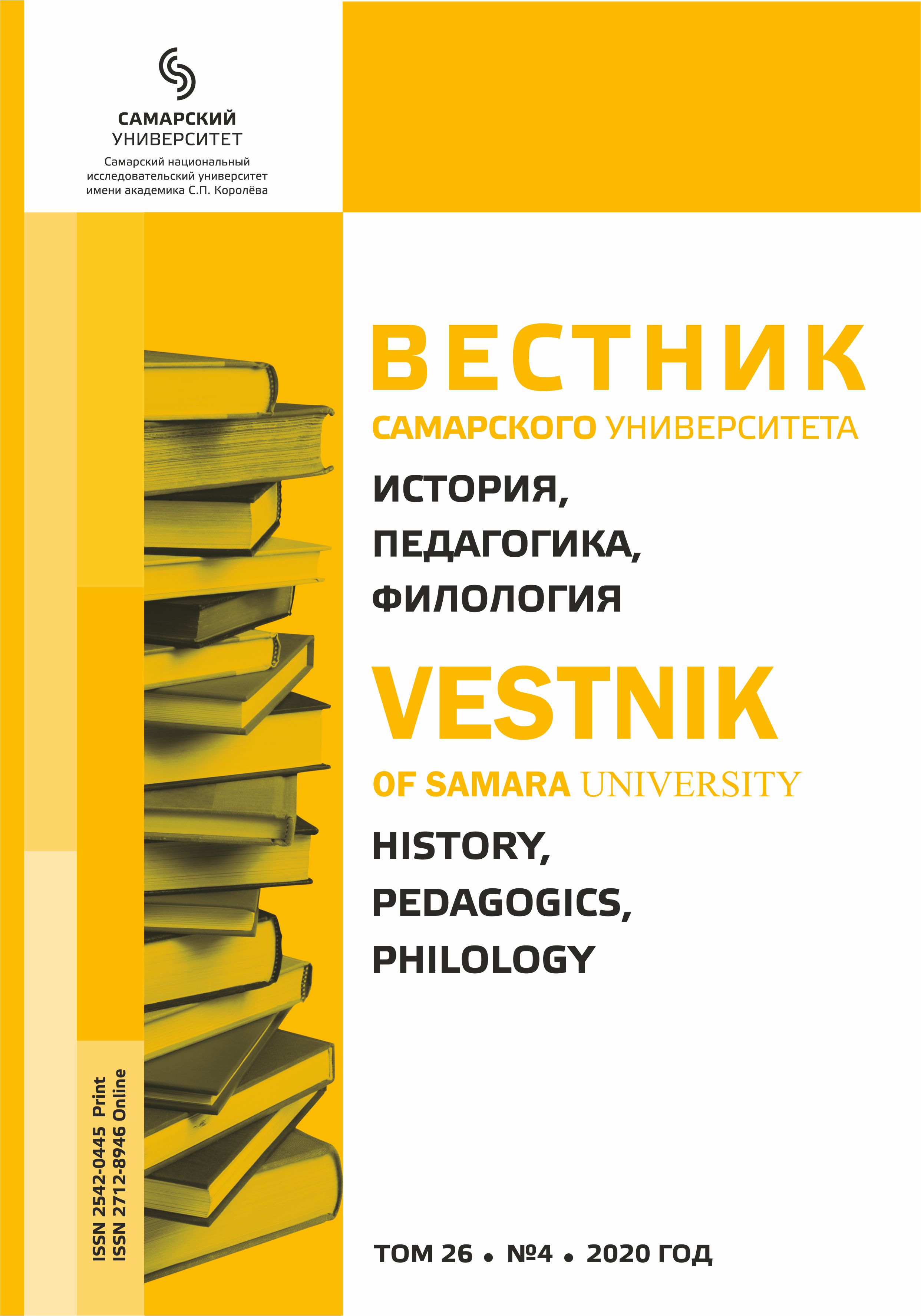Semantic Characteristic of Nouns Formed with the Suffix -ost’ in the Modern Russian Literary Language
- Authors: Shuchun Z.1
-
Affiliations:
- Lomonosov Moscow State University
- Issue: Vol 26, No 4 (2020)
- Pages: 101-108
- Section: Articles
- URL: https://journals.ssau.ru/hpp/article/view/8266
- DOI: https://doi.org/10.18287/2542-0445-2020-26-4-101-108
- ID: 8266
Cite item
Full Text
Abstract
The article aims to demonstrate the semantic diversity of the nouns formed with the suffix -ost’, which have been considered as one of the most regular word-formation types in the modern Russian language. In order to give a semantic portray of the given word-formation type we have analysed all the nouns with the given suffix, included in the Shvedova Dictionary and the «Russian Newspapers of the End of XX Century» Corpus, developed by Laboratory for General and Computational Lexicology and Lexicography, Lomonosov Moscow State University. The analysis shows that nouns formed with the given suffix, while consisting a large percentage of deadjectival nominalisations in the modern Russian language, show rather diverse semantic features. The main subtypes of meanings, which consist the semantic paradigm of the given word-formation type, are ‘transpositional’ (construction of nouns that name a quality), ‘parametric’ (nouns that can be used as a parameter for measuring) and subject meaning (nouns that refer to a concrete subject in the extralinguistic reality). In addition, the last subtype – subject meaning – is also consistent of nearly 20 semantic classes, including ‘substance’, ‘a person’, ‘a place’, ‘a type of documents’, ‘an event’, ‘a phenomenon’ and so on. The analysis of the corpus data shows that a large proportion of the most frequently used words in newspaper texts are the words that have rather concrete meanings. Hence their definitions in dictionaries are ought to be updated in accordance with their usages in the corpus. The results could be applied in the future study of deadjectival nominalisation in the modern Russian language
About the authors
Zhang Shuchun
Lomonosov Moscow State University
Author for correspondence.
Email: shushu8522@mail.ru
ORCID iD: 0000-0002-5145-2774
postgraduate student, Department of Russian Language
Russian Federation, 1, Leninskie gory, Moscow, 119001, Russian FederationReferences
- Apresyan 1995 – Apresyan Yu.D. (1995) Selected works. Volume 1. Lexical Semantics. Moscow: Shkola «Iazyki russkoi kul'tury», Izdatel'skaia firma «Vostochnaia literatura» RAN, 472 p. Available at: http://rusgram.ru/sites/default/files/liter/ssfp/apresjan_lexsem.pdf. (In Russ.)
- Zemskaya 2011 – Zemskaya E.A. (2011) Modern Russian Language. Word-formation. Moscow: Flinta, 328 p. Available at: https://studfile.net/preview/6857194/. (In Russ.)
- Panov 2007 – Panov M.V. (2007) Proceedings on general linguistics and Russian language. Vol. 2. Moscow: Iazyki slavianskoi kul'tury, 848 p. Available at: http://www.bookre.org/reader?file=1245281. (In Russ.)
- Shvedova 1980 – Shvedova N.Yu. (Ed.) (1980) Russian Grammar. Vol. 1. Moscow: Nauka, 784 p. Available at: http://rusgram.narod.ru/index1.html; https://bookree.org/reader?file=1351727. (In Russ.)
Supplementary files













